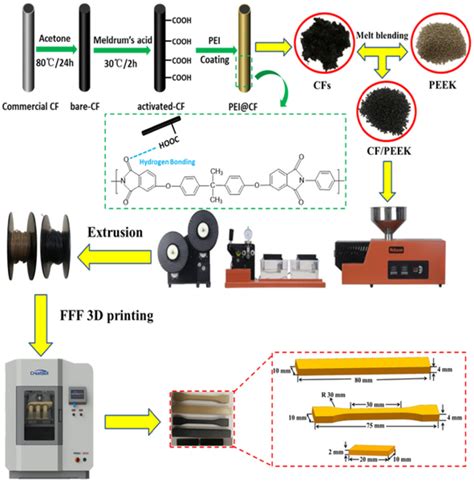computational design of metal-fabric orbital debris shielding Semantic Scholar extracted view of "Computational design of orbital debris shielding" by E. Fahrenthold $134.99
0 · Design and evaluation of additively manufactured polyetherimide
1 · DEVELOPMENT OF THE NEXT GENERATION OF
2 · Computational design of orbital debris shielding
3 · Computational Design of Orbital Debris Shielding
4 · Computational Design of Orbital Debris Shielding
5 · Computational Design of Metal–Fabric Orbital Debris Shielding.
6 · Computational Design of Metal–Fabric Orbital Debris Shielding
7 · Computational Design of Metal
8 · A Parametrical Study on Hypervelocity Impact of Orbital Debris
Tsugami America is a leading provider of Swiss-type CNC machines, specializing in small parts manufacturing. Partner with us to enhance your manufacturing capabilities.
Design and evaluation of additively manufactured polyetherimide
Recent research has applied a hybrid particle–finite element method to model the hypervelocity impact response of an enhanced metal–fabric orbital debris shield developed for .Hybrid particle–finite element methods, developed specifically to simulate hypervelocity impact physics, may be used to compliment experimental and analytical research on micrometeoroid . Computational Design of Orbital Debris Shielding. Eric P. Fahrenthold; Eric P. Fahrenthold. University of Texas, Austin. Search for more papers by this author. .
Recent research has applied a hybrid particle–finite element method to model the hypervelocity impact response of an enhanced metal–fabric orbital debris shield developed for .
Semantic Scholar extracted view of "Computational design of orbital debris shielding" by E. Fahrenthold
Within this context, this study presents a computational framework, utilizing the Material Point Method (MPM) to assess the risk of orbital debris impacting space structures. .adshelp[at]cfa.harvard.edu The ADS is operated by the Smithsonian Astrophysical Observatory under NASA Cooperative Agreement NNX16AC86ATypical shielding derives from the Whipple shield [11], a thin plate offset from the spacecraft wall that will fracture an incoming hypervelocity projectile into a debris cloud, dispersing energy .
Computational Design of Metal–Fabric Orbital Debris Shielding. Article. CID:
The novel structure of metallic foams is of interest in the design of next-generation debris shields as it introduces physical mechanisms that are advantageous to hypervelocity impact shielding . Recent research has applied a hybrid particle–finite element method to model the hypervelocity impact response of an enhanced metal–fabric orbital debris shield developed for the Soyuz Orbital Module, composed of both thermal insulation and orbital debris protection layers.
Hybrid particle–finite element methods, developed specifically to simulate hypervelocity impact physics, may be used to compliment experimental and analytical research on micrometeoroid and orbital. Computational Design of Orbital Debris Shielding. Eric P. Fahrenthold; Eric P. Fahrenthold. University of Texas, Austin. Search for more papers by this author. . Computational evaluation of metal foam orbital debris shielding. What's Popular AIAA SPACE 2014 Conference and Exposition. 4-7 August 2014. San Diego, CA. Recent research has applied a hybrid particle–finite element method to model the hypervelocity impact response of an enhanced metal–fabric orbital debris shield developed for the .Semantic Scholar extracted view of "Computational design of orbital debris shielding" by E. Fahrenthold
Within this context, this study presents a computational framework, utilizing the Material Point Method (MPM) to assess the risk of orbital debris impacting space structures. By incorporating various parameters, including projectile size and shape, the framework aims to enhance protection strategies against hypervelocity impacts.adshelp[at]cfa.harvard.edu The ADS is operated by the Smithsonian Astrophysical Observatory under NASA Cooperative Agreement NNX16AC86A

DEVELOPMENT OF THE NEXT GENERATION OF
Typical shielding derives from the Whipple shield [11], a thin plate offset from the spacecraft wall that will fracture an incoming hypervelocity projectile into a debris cloud, dispersing energy over a broad area and reducing damage [12].Conventional shields have evolved into multi-walled structures [[13], [14], [15]], to effect cascading particle fracture and then into “stuffed Whipple .Computational Design of Metal–Fabric Orbital Debris Shielding. Article. CID:The novel structure of metallic foams is of interest in the design of next-generation debris shields as it introduces physical mechanisms that are advantageous to hypervelocity impact shielding (e.g. increased fragmentation/melt/vaporization, energy dissipation, etc.). Recent research has applied a hybrid particle–finite element method to model the hypervelocity impact response of an enhanced metal–fabric orbital debris shield developed for the Soyuz Orbital Module, composed of both thermal insulation and orbital debris protection layers.
Hybrid particle–finite element methods, developed specifically to simulate hypervelocity impact physics, may be used to compliment experimental and analytical research on micrometeoroid and orbital.
Computational Design of Orbital Debris Shielding. Eric P. Fahrenthold; Eric P. Fahrenthold. University of Texas, Austin. Search for more papers by this author. . Computational evaluation of metal foam orbital debris shielding. What's Popular AIAA SPACE 2014 Conference and Exposition. 4-7 August 2014. San Diego, CA. Recent research has applied a hybrid particle–finite element method to model the hypervelocity impact response of an enhanced metal–fabric orbital debris shield developed for the .Semantic Scholar extracted view of "Computational design of orbital debris shielding" by E. Fahrenthold Within this context, this study presents a computational framework, utilizing the Material Point Method (MPM) to assess the risk of orbital debris impacting space structures. By incorporating various parameters, including projectile size and shape, the framework aims to enhance protection strategies against hypervelocity impacts.
adshelp[at]cfa.harvard.edu The ADS is operated by the Smithsonian Astrophysical Observatory under NASA Cooperative Agreement NNX16AC86ATypical shielding derives from the Whipple shield [11], a thin plate offset from the spacecraft wall that will fracture an incoming hypervelocity projectile into a debris cloud, dispersing energy over a broad area and reducing damage [12].Conventional shields have evolved into multi-walled structures [[13], [14], [15]], to effect cascading particle fracture and then into “stuffed Whipple .
Computational Design of Metal–Fabric Orbital Debris Shielding. Article. CID:

Learn about the wiring diagram for a junction box lighting circuit. Understand how junction boxes are used to connect and distribute electricity for lighting fixtures in your home or building.
computational design of metal-fabric orbital debris shielding|A Parametrical Study on Hypervelocity Impact of Orbital Debris